Pride of Place Learning Hub: Phase Two
Pride of Place Learning Hub: Phase Two
In Phase Two, you can explore first steps in establishing, funding, and resourcing your Pride of Place partnership. This Learning Hub is sponsored by Aviva, Strategic Partner of the Business in the Community (BITC) Pride of Place programme.
Establishing Your Place
Welcome to ‘Establishing Your Place’, the fourth Pride of Place module and the beginning of the process of transforming your idea of working in a place into a reality.
This module is intended to provide everyone involved in a place-based partnership with an overview of the steps required to confirm the place you will work in and lay the foundations for long-term change.
Once you have gone through the process of ensuring that your choice of place makes strategic sense and is ready for business investment, you can start the process of becoming part of the Pride of Place network.
What information should I already have on hand before establishing my place?
In Phase One, the ‘Getting to Know Your Potential Place’ module outlined how to shortlist potential places and assess them based on BITC’s place criteria. It is vital that, before formally establishing your place and integrating it within the Pride of Place network, you have used the resources in that module to help you:
By ensuring that you have collected sufficient information to shortlist your chosen places and to explain how they fare based on the Place Criteria, you will have laid the foundations for progressing to a formal decision and approaching potential funders to underpin activity in your place (see the next module, ‘Funding your place’ for more information on this). This module will help you reach a position where you have progressed from shortlisting to making a decision and will guide you through the process of mapping out your initial key stakeholders.
How should I progress from my shortlist to decide where to establish my place?
To work through your shortlist of places and move towards a formal decision, you will need to ensure that you have assessed each place on your list against the Place Criteria, which were explained in ‘Getting to Know Your Potential Place.’ As a reminder, the place criteria are listed below:
If you have a shortlist of more than one chosen place, now is the time to bring an objective and rigorous approach to weighing up the merits of each place based on the above criteria. You may wish to create a scoring mechanism to help you judge between different places of interest based on the quantitative and qualitative information you have gathered so far.
Selecting between shortlisted places
Following the guidelines in ‘Getting to know your potential place,’ Navjyot conducted desk research and held short meetings with some colleagues and local connections to assess three potential places against the Place Criteria. Navjyot captured her findings using a simple shortlisting table and chose to implement a traffic-light/RAG system to make it easy to distinguish between relative suitability amongst her chosen places.
By assessing her chosen places using the place criteria, and mapping them against each other, Navjyot could see that Northtown provided the most compelling case for establishing a Pride of Place partnership. Using the place criteria in a balanced way helped Navjyot to provide objective distance from her initial desire to launch a Pride of Place partnership in her hometown of Hillsbury, where she has witnessed increasingly severe challenges for local people around fuel poverty in recent years.
If you only have one place on your shortlist, you can use the information discovered when assessing it against the place criteria to propose that it is included as an official Pride of Place partnership. Get in touch with the BITC Place Team to ascertain whether you have sufficient evidence to formalise your place.
In doing so, BITC will work with you to ensure that your chosen place is suitable for inclusion in the Pride of Place programme, considering its relevance according to the place criteria and its compatibility with existing places. This will, for example, ensure your new Pride of Place partnership would not be in competition with an existing place for funding and other resources.
Mapping key early stakeholders
Just as businesses make better and more informed decisions when they are being transparent and accountable to stakeholders, Pride of Place programmes depend on a continual and growing understanding of who the key stakeholders are in your chosen place.
Pride of Place partnerships should seek to work with stakeholders to co-create solutions based on relationships of trust between businesses and the wider community. Before carrying out stakeholder engagement, it is important to map and prioritise stakeholder. The checklist below provides a task list to help you get a better idea of the kind of people and organisations you should seek to map:
BITC’s stakeholder mapping approach pushes organisations to think about all their stakeholders from different perspectives. This involves thinking through which stakeholders are accountable, which ones will run activities and implement changes, which ones are drivers or pressure-creators, and which ones will be affected.
When mapping, it is important to ensure that diverse and underrepresented stakeholders are accounted for and included across the entire value chain. Make sure that you are considering hidden or vulnerable stakeholders (members of different communities in the area) as well as the wider environment.
Once stakeholders have been listed, map them based on their influence over the success of the place-based approach compared to the impact that the place-based approach will have on them. BITC’s Advisory Services Team can provide bespoke, expert support to help you uncover more about the inner workings of your chosen place.
This is an iterative process. Your stakeholder map should be reviewed and updated on an ongoing basis and needs to be thoroughly tested with the priority stakeholders themselves. At this stage in the process, it can be helpful to begin recording key stakeholder information using a Data Protection compliant Client Relationship Management (CRM) System.
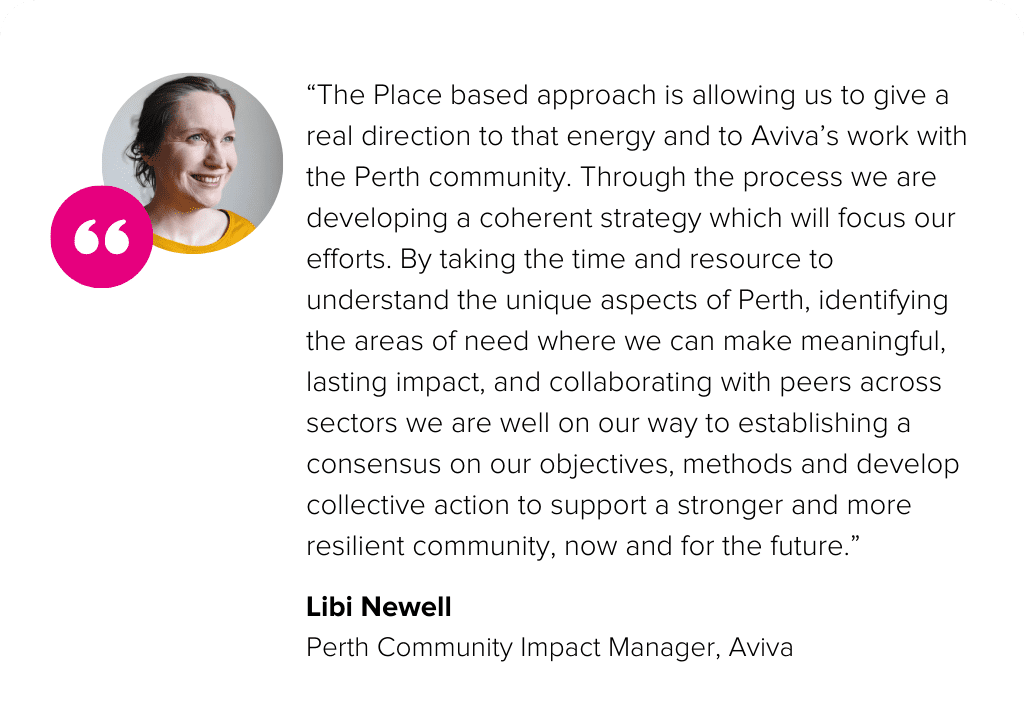
Early engagement with key stakeholders
The success of any Pride of Place partnership requires sensitive and diligent engagement with the key stakeholders present in your place. Not conducting sufficient stakeholder engagement will significantly reduce the likelihood of success. Effective stakeholder engagement leads to collaboration, co-creation of solutions and more successful outcomes. Stakeholder engagement throughout place-based approaches helps counteract any initial scepticism and gives businesses a licence to operate.
The stakeholder engagement process includes using your stakeholder map to determine who to engage and how to engage them. Stakeholder engagement should be designed:
Businesses need to be pragmatic, starting with the engagement of priority stakeholders. Stakeholder engagement should include interviews, surveys, and ‘community conversations’ with community representatives. Stakeholder engagement is an ongoing process throughout the design and delivery of place-based approaches.
Resources
Establishing Your Place: FAQs
Summary and next steps
This module has guided you through the initial steps needed to help you progress your chosen place from the shortlisting phase to deciding where to establish a new Pride of Place partnership. Using this information, you are now ready to contact BITC to discuss your selection and begin the process of confirming your place.
There are still lots of conversations to be had, research to be undertaken, and essential tasks to be fulfilled before your place is ready to publicly and officially ‘launch’. The remaining modules in Phase Two will help you through the next steps involved in the process.
If you are comfortable and confident that the case for working in your chosen place is strong, and you have had a formal conversation with BITC to discuss how your chosen place meets the Place Criteria. The next steps are outlined in the next module, ‘Funding Your Place,’ in which you will find more information about how Pride of Place partnerships are funded, guidance to help you identify and build relationships with funders, and tips on how to apply for and secure funding.
In some cases, even though you may feel you have enough information to progress, in the intervening time, a big external change might have occurred that impacts how it meets the Place Criteria, or you and your early stakeholders might no longer feel able to give the required time to the process. If so, ‘Managing Delays and Changes’ in Phase One can help you manage this in a sensitive way.
Funding Your Place
Welcome to ‘Funding Your Place’, the Pride of Place module that guides you through the process of looking for, bidding for, and securing the funding you will need to maximise the impact of your partnership.
Pride of Place partnerships can make a difference to local people only when they are resourced well and for the long-term.
The diversity of stakeholders involved in partnerships means that there are many potential avenues to secure funding and other financial support to drive local action.
Who can fund a Pride of Place partnership?
There is a range of funders contributing financial resources across existing Pride of Place partnerships. Whilst they may be used to directly support community projects in particular places, all funds contributed to Pride of Place would be legally received by Business in the Community (registered charity number: 297716). If you would like to know more about the expectations and regulatory requirements involved in charitable funding, this page published by The National Council for Voluntary Organisations (NCVO) outlines all the latest information.
Finding funding for Pride of Place partnerships requires a multifaceted approach, blending research with a clear understanding of what funders might expect from their involvement. The below list captures some of the main types of funders supporting transformation in places across the UK:
Businesses
Businesses often support community projects as part of their corporate social responsibility strategies. Pride of Place partnerships provide diverse opportunities for businesses to invest both in the long-term prospects of a place and to support more immediate community needs.
Some businesses make donations or funding available through charitable foundations or another socially focused subsidiary. Sometimes, working with these organisations is more similar to a charitable trust or foundation than a corporate entity.
Different types of business will have different aims, experiences, and available resources to fund Pride of Place activity.
Examples of businesses providing funding for Pride of Place include Anglian Water, Aviva, Coventry Building Society, KLA Foundation, Linklaters, and Principality Building Society.
Grant-making trusts and foundations
There are thousands of organisations that provide different levels of grant funding for community initiatives. Some operate nationwide, whereas others cover specific regions or locations. See the resources section below for links to some of the useful databases that can help you search for sources of funding.
Most trusts and foundations run a range of different funding and application rounds. There may be large amounts of money available for strategic, multi-year purposes, or smaller pots of funding designed to support quicker impact in communities.
All trusts and foundations publish eligibility criteria and will also clearly state the kinds of work they fund, the beneficiaries they seek to target, and the impact they seek to make.
Examples of trusts and foundations funding activity via the Pride of Place programme include the National Lottery Community Foundation and Worshipful Company of Mercers.
Local, regional, and national government
Local councils often provide grants or funding schemes for community projects that benefit residents.
Sometimes local funding comes from dedicated local budgets, though it is becoming increasingly common for local or combined authorities to have delegated authority for dispersing national government funding.
Schemes that operate UK-wide (or within England, Scotland, or Wales specifically) are often managed by respective national governments, with information on eligibility and application processes available on their equivalent websites.
Some Pride of Place partnerships have been successful in applying for UK Government Shared Prosperity Funding. Examples of local and combined authorities providing funding for Pride of Place include Blackpool Council, City of Bradford Metropolitan District Council, Lancashire County Council, Newport City Council, Norwich City Council, and Rochdale Borough Council.
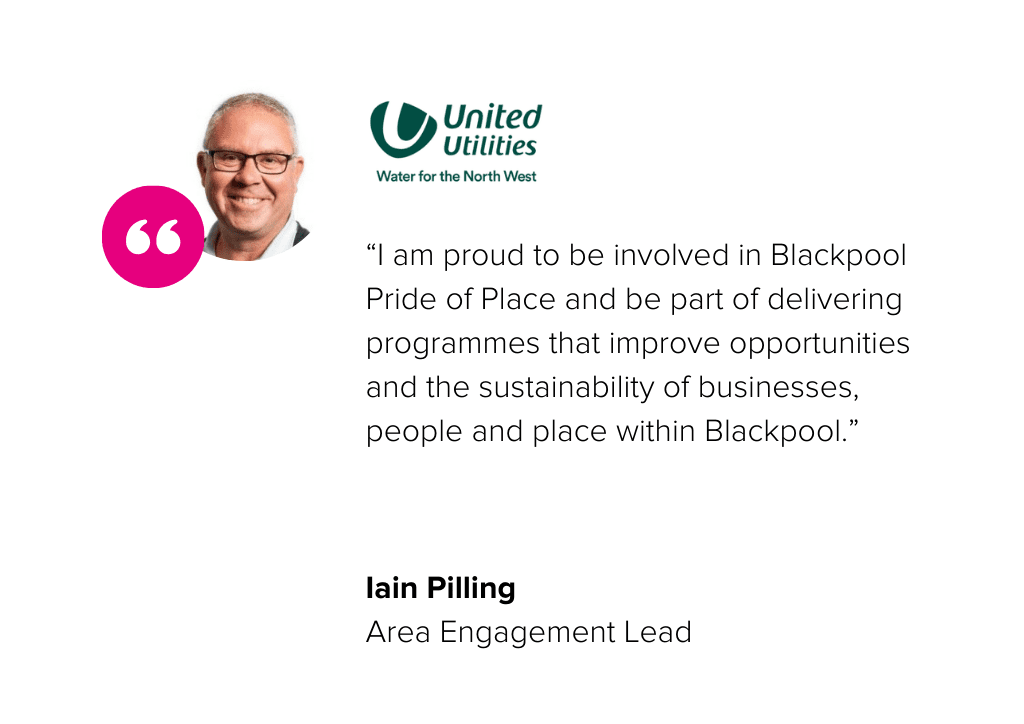
How to find relevant funding opportunities
Finding funding for Pride of Place partnerships usually starts with good conversations between the Place Lead, BITC, and the potential funder in question.
Since the Pride of Place programme is focused on long-term, sustainable change informed by actual local needs and priorities, it can be helpful to think about approaching funders as a chance to explore opportunities to build trust, co-create, and partner with them.
However, to get to the stage of holding open and purposeful conversations, it can be helpful to know where to look for prospective funders.
You are likely to already have a reasonable understanding of some of the key stakeholders in your place if you have examined its suitability against the Place Criteria, as discussed in ‘Getting to Know Your Potential Place’ and ‘Establishing Your Place.’
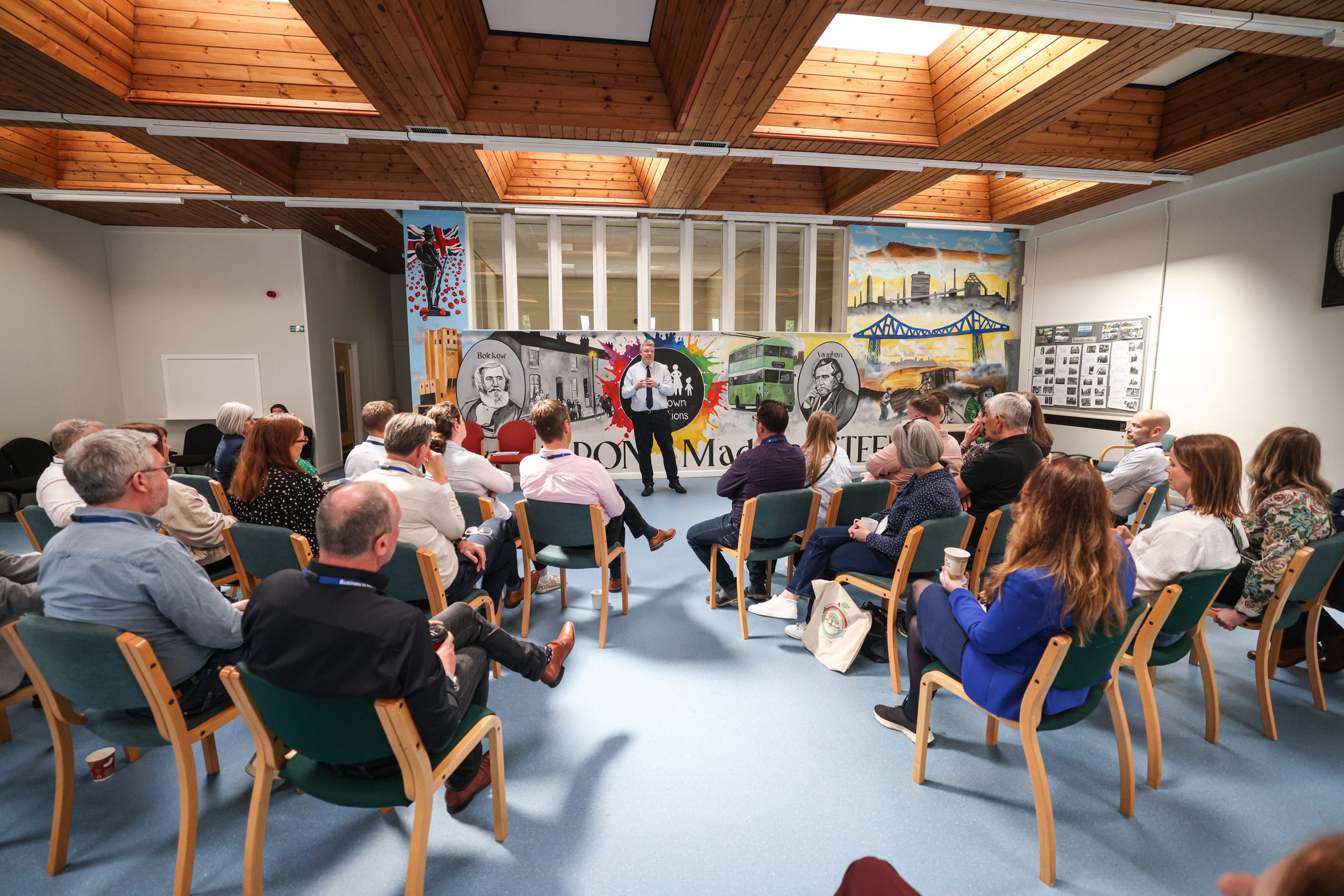
What levels of funding should I be seeking?
Successful Pride of Place partnerships will usually be funded by a combination of larger, multi-year grants or donations, complemented by a number of shorter-term funding agreements focused on specific outcomes. Partnerships need to have at least £100k per annum secured to cover their core running costs and have enough available resource to make things happen locally.
BITC asks businesses to make a contribution if they are to be part of a Pride of Place Board (see ‘Building and Managing Your Board’). While this is typically at a minimum level of £10,000 per annum in each place, some businesses choose to make a larger, multi-year contribution. This helps to cover the cost of the local resource, while demonstrating that a business is genuinely committed to the partnership.
If you work for a business, it is encouraged to request in-kind contributions up to £10,000 to demonstrate commitment and support and to fund early interventions and quick win activity.
In the Pride of Place partnerships that BITC leads, local authorities often match private sector contributions. For business led places, this will be less likely, though the local authority may be able to provide resources and support in different ways.
The level of investment required by any one business will depend on:
Resources
The resources below will support you in starting your placemaking journey and help provide an overview of best practice. More resources will be added to the modules as this Learning Hub is developed and improved, so keep in touch with your main BITC contact to learn more about the latest content as it launches:
Funding Your Place: FAQs
Next steps
Now that you have a better understanding of the kinds of funding available and have started to plan your approaches to potential funders, you may be ready to start building strong relationships with key stakeholders in your place.
Check out ‘Working with Your Local/Combined Authority’ for tips on how best to approach the important relationship with local government in your place. If you would like to learn more about working with other stakeholders and why they are important to a successful partnership, read ‘Finding and Energising Local Leaders.’
If you are confident that you have made a strong start to building relationships with cross-sector partners and have already worked with BITC to line up cohesive approaches to different funders, read ‘Building and Manging Your Board’ to find out about the next step in your Pride of Place journey.
Being a Place Funder
Welcome to ‘Being a Place Funder’, the Pride of Place module that is designed to support current and potential funders through the process of supporting activity in one or more places.
Whether you represent a business, charitable or corporate foundation, government department with budgetary responsibility, or another funding entity, there are diverse and exciting opportunities to join BITC’s growing Pride of Place movement.
Read on to find out more about what is expected of funders of Pride of Place partnerships, and what you can anticipate in providing funding.
What types of funders support Pride of Place partnerships?
BITC’s place-based approach is focused around long-term, strategic, collaborative change, based on community need and led by business commitment. There is a range of funders already involved in Pride of Place partnerships:
What levels of funding are required to help Pride of Place partnerships thrive?
BITC’s experience suggests the following funding is required when starting a Pride of Place partnership:
£100k per annum is required to put a relatively senior level resource on the ground to drive the work of the partnership. This funding could be delivered as follows:
As your partnership develops you should remain open to identifying additional funding sources to deliver programmes, events, and activities which align to your partnership priorities.
What should I expect as a funder?
Depending on the level and type of funding you are considering or willing to contribute, BITC is committed to ensuring that you are kept engaged, informed, and consulted on the outputs, outcomes, and changes enabled by your support.
As well as forming a close relationship with your relevant Place Lead (find out more about the role of the Place Lead in ‘Appointing a Place Lead,)’ you will also be connected with BITC’s Place Team, and, where applicable, Executive Team, to ensure that your funding ambitions are matched with diligent and purposeful activity.
BITC has a track record of working flexibly and responsively with a wide range of funders, and the Pride of Place programme presents major UK-wide opportunities to generate far-reaching and long-term impact, safe in the knowledge that your commitment is backed by some of the largest employers in the UK.
What is expected of me as a funder?
Existing and potential Pride of Place funders should be comfortable and familiar with BITC’s place-based approach (explore our introduction to place and placemaking in ‘Before You Start‘). To drive lasting change, a long-term time horizon is required, informed by a strategy, objectives, and a vision that have been developed alongside diverse community stakeholders.
Most Pride of Place funders ally their financial commitment with proactive, strategic support for the stakeholders and activities in their relevant place and are involved and thoughtful members of many existing Pride of Place Boards.
Action plans and strategies are developed in the place, with the place, and by the people and organisations of that place, helping to ensure that activities meaningfully address local needs and take advantage of local strengths and existing opportunities.
Resources
Being a Place Funder FAQs
Appointing a Place Lead
Welcome to ‘Appointing a Place Lead’, the Pride of Place module that guides you through the process of becoming a Place Lead or appointing one to drive action in your selected place.
This module is intended to provide everyone involved in a place-based partnership with guidelines of what is involved in the Place Lead role. The module is also designed to support those responsible through the recruitment and selection process.
What is a Place Lead?
The Place Lead will be the main driving force and connecting tissue between the diverse stakeholders involved in creating lasting local change in any Pride of Place partnership.
BITC has found that to maintain momentum, the appointment of a Place Lead ensures that someone is responsible for holding the Board to account and managing stakeholder relationships and partnerships.
This role is usually filled by someone who is locally based and has long held relationships across networks in the place, having worked previously with the local authority and/or local community organisations.
This role will also work to ensure that the priorities of businesses and funders are met but balanced against the priority of listening to community stakeholders and addressing their needs. They can ensure that solutions are co-designed and inclusive. Ideally, this role is a permanent position co-funded by a local authority, business, or other funder.
Here, BITC’s Rochdale Place Lead, Chris Minogue, discusses how he and his Board have brought new businesses on board by reaching out to them directly and catering to their needs.
When is a Place Lead usually appointed?
In many cases, the person responsible for getting the Pride of Place partnership up and running will be the primary contender for being appointed as a formal Place Lead, but sometimes the skills, experience, and knowledge required will shift compared with early discussions and decisions.
Even though the case for investing in a place may be compelling and meets the place criteria introduced in ‘Getting to Know Your Potential Place’, sometimes other people, in a voluntary, pro-bono, or seconded capacity, will undertake the initial research and scoping phases of a partnership.
In these cases, it can be useful for an involved business to enable a well-equipped colleague to take on the role of Business Connector in the early phases of the partnership. Blackpool, Lowestoft, Sheffield, and Wisbech all started with a Business Connector on secondment. That individual and their network of connected local stakeholders may then look to hand over to a dedicated Place Lead once funding and a strong early network of supporters are secured, working with stakeholders to identify and recruit a suitable candidate.
Who can become a Place Lead?
Most important to the role of the Place Lead is a readiness to work together in partnership with a wide range of people and organisations, including senior stakeholders, all in pursuit of positive long-term outcomes in a place.
Effective placemaking takes time. Place Leads need to demonstrate tenacity but also agility, so that they can effectively build trust with new and existing partners, encourage more people to work with them collaboratively, and embed themselves in the fabric of their place.
The Place Lead role requires energy, enthusiasm, and a passion for making change locally. In this respect, whilst it is not essential that a Place Lead lives in the place in which they are working, they will need to be open to spending time there and building lasting relationships in a collaborative, consultative way.
What career history might a Place Lead have?
Since placemaking involves cross-sector collaboration, Place Leads are encouraged to bring the credibility, expertise, and ideas gained from working in different sectors to the role.
The levers of change available to a place can differ widely and so Place Leads may bring entrepreneurial experience of negotiation and project delivery from within the private sector or experience of building consensus by working closely with public and voluntary sector organisations to support positive social outcomes. They are tenacious, creative, independent, able to build trust within the community, and credible to senior business leaders.
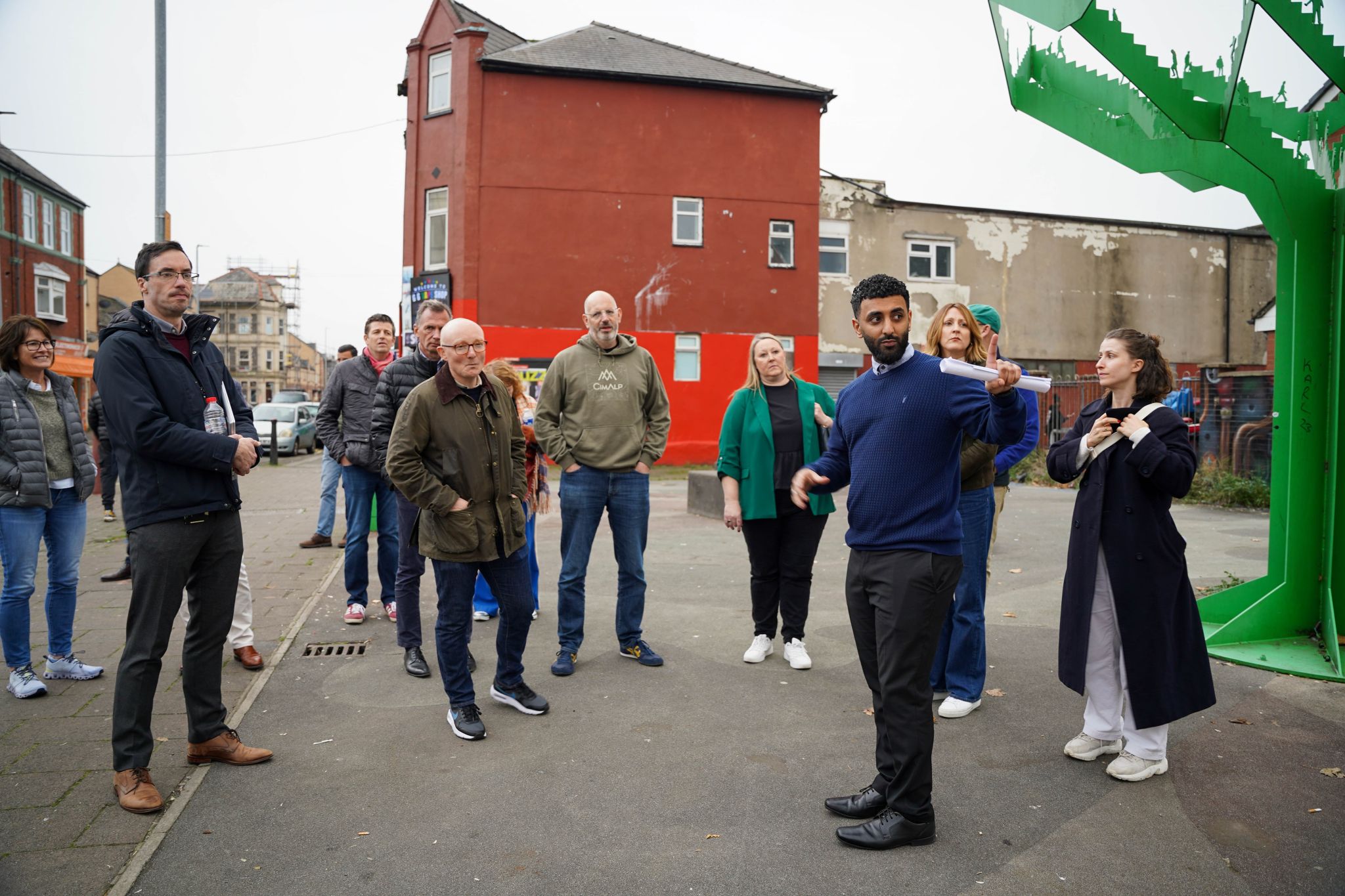
What knowledge, experience, skills, and behaviours does a Place Lead need?
Whilst every place is different, and there may be certain attributes that feel particularly important in your place, a general overview of the relevant attributes a Place Lead will need are below:
What responsibilities do Place Leads have?
Place Leads should aim to become the lynchpin for all that occurs through a place-based partnership, building strong and lasting relationships that help secure a sustainable trajectory for activity in their place. Key responsibilities include:
Onboarding your Place Lead and shaping their first year in post
Generally, Line Management responsibility for Place Leads will sit with either BITC’s Place Team or a senior leader operating within a partner business in the case of secondments or partnerships that are led by Aviva or another corporate partner.
The biggest priority in the early months for the Place Lead is to begin building strong, mutually beneficial relationships with the key people and organisations who are integral to the success of your Pride of Place partnership.
Businesses, local government, and voluntary organisations involved in any partnership should endeavour to help connect new Place Leads to the right people and teams within their networks to help them get started. Everyone involved in the partnership has a part to play in this, so it is a good idea to ensure that within their first month or two, the Place Lead is formally introduced to the key stakeholders who will be involved in driving change locally.
Other key things to think about when supporting a Place Lead through their first year in post, or starting off as a Place Lead yourself, are:
Resources
Appointing a Place Lead: FAQs
Next steps
With a number of places already up and running across the country, steered by an appointed Place Lead, Aviva and BITC are on hand to help you through the recruitment and selection process. Please contact the BITC Place Team to discuss your approach to appointing or becoming the Place Lead for your Pride of Place partnership.
Once you have appointed your Place Lead you are ready to start building strong and impactful relationships with the businesses, local authority, service providers, and community groups in your chosen place. The remaining modules in this section cover how best to communicate with local government (‘Working with Your Local/Combined Authority‘) and other key stakeholders (‘Finding and Energising Local Leaders‘) at this stage in the process, priming them and other local changemakers to get more deeply involved in driving lasting impact for local people.
If you feel you do not yet have the foundations in place to appoint a Place Lead, you may wish to visit the other modules in this section, including ‘Establishing Your Place’ and ‘Funding Your Place.’
Working with Your Local / Combined Authority
Welcome to ‘Working with Your Local/Combined Authority’, the Pride of Place module designed to explain why working with your local or combined authority is so important to the place-based approach and to help guide you through the process, and some of the challenges, of doing so.
Appropriate representation and levels of involvement from your local or combined authority are foundational to the success of Pride of Place partnerships.
From helping ensure that your partnership is as inclusive of diverse community voices as possible to being around the table as a Board Member, local government colleagues and decision-makers can be real drivers for change.
What levels of engagement are possible with a local or combined authority?
Across the UK, representatives from local and combined authorities are integral stakeholders of Pride of Place partnerships.
Their levels of engagement vary depending on a number of factors, including the capacity and resources available to the relevant authority, as well as external aspects such as local election cycles.
However, in most cases, council leaders or senior colleagues of local or combined authorities serve as Board Members become funders, and act as key advocates of place partnerships.
Their voice and credibility as elected or appointed representatives of the communities they serve means that engaging leaders of local government can really accelerate the possibilities of your partnership. No Pride of Place partnership is possible without the approval of the local authority. Throughout your placemaking journey, you are likely to work with people with different remits, different seniorities, and different specialisms within your local or combined authority. Whilst these relationships need to be handled with care and sensitivity, they offer brilliant opportunities to enhance your own understanding of your place.
What are the benefits to a local or combined authority of being involved in a Pride of Place partnership?
BITC’s Pride of Place programme is an ambitious and successful UK-wide example of cross-sector partnerships driving tangible local change. Whilst there may be some resistance initially, in most cases, calling on examples of the impact of Pride of Place partnerships in other places can help bring local and combined authorities on board with your plans.
The Pride of Place approach is focused on long term holistic regeneration, working on some of the hardest, most deep-rooted issues facing communities. As such, public, private, and community partners all have a part to play. Places are stronger and more effective when working together. No single entity will solve this on their own.
Some of the key benefits for local government working with Pride of Place include:
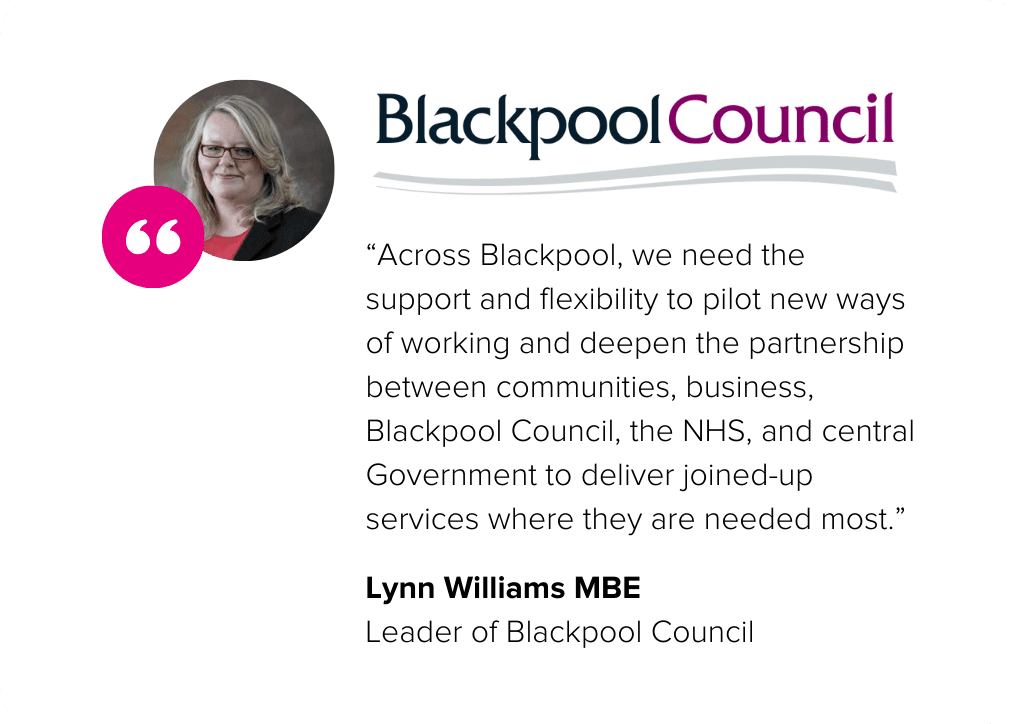
How should I go about building relationships with local government officials and colleagues?
Some of the most common doubts BITC hears when working in places stem from past experiences of well-meaning people or organisations starting to make things happen but then moving on once funding dries up or priorities change. Sometimes local government leads will cite other projects that have not finished, or have not been sustainable, which can sometimes leave them feeling nervous or reticent to engage with a ‘new’ partner to make local change.
It can be beneficial to take a ‘combined approach’ to building a relationship with your local or combined authority.
Start by researching the departments or teams within the authority. The ones most likely to be interested in exploring the potential of Pride of Place will usually be concerned with economic growth and development, housing and social care, education, and the environment. Business in the Community’s Advisory Services Team can help you map out local government stakeholders and plan an appropriate approach.
You should also make sure you are familiar with recent policy and strategy announcements and publications made by the relevant authority. All local and combined authorities will have an area of their website relating to ‘Publications’ or ‘Strategy’ that will enable you to read the latest updates. Referencing relevant documentation when approaching local government is advised.
When you have clarity on where you are planning to work, some of the issues you plan to tackle, and some of the important business and community stakeholders you are planning to work with, writing some official correspondence, addressed to the Leader and Chief Executive of the council/combined authority can be a useful way of securing a meeting with senior decision-makers. This is essential to helping you work towards an agreed way of working. Always seek support from your main BITC Place Team contact before contacting senior local or combined authority representatives.
Resources
The resources below will support you in starting your placemaking journey and help provide an overview of best practice. More resources will be added to the modules as this Learning Hub is developed and improved, so keep in touch with your main BITC contact to learn more about the latest content as it launches:
Working with Your Local/Combined Authority: FAQs
Next steps
Now that you have started building links with local government in your place, you are ready to cast the net wider and really accelerate your stakeholder mapping and outreach. The next module, ‘Finding and Energising Local Leaders,’ provides further advice and guidance to help you build early connections with business and community leaders who may become key partners in your place.
If you feel like you need to do a bit more research and groundwork before reaching out to your local or combined authority, you might find it useful to navigate to the other modules in this section or go back to ‘Before You Start’ and ‘Getting to Know Your Potential Place’ for a reminder of the fundamentals.
If you have spoken with BITC and confirmed your plan of approach with local government in your place, you may feel ready to start building and managing your Pride of Place Board. If so, ‘Building and Managing Your Board’ would be a great next step.
Finding and Energising Local Leaders
Welcome to ‘Finding and Energising Local Leaders’, the Pride of Place module designed to help you build on your initial research and really start the process of mapping and engaging important stakeholders.
Pride of Place partnerships require a big focus on ‘partnerships’ to maximise their potential reach and impact.
BITC’s place-based approach is all about empowering diverse local stakeholders to pioneer solutions to local challenges. Read on for tips and pointers on how to get this process off the ground.
What kind of local leaders are good to get involved in Pride of Place partnerships at this early stage?
If you have read some of the other introductory modules, including ‘Before You Start’ and ‘Getting to Know Your Potential Place,’ you should now be really comfortable with the fact that the foundations of successful place-based partnerships are built from the expertise, knowledge, networks, and skills of the businesses, communities, local government, and service providers present in your place.
When you are starting to build relationships with useful contacts and stakeholders in your place, it is useful to view things both from a wide, ‘zoomed out’ viewpoint and to really dig deep to locate those vital changemakers who make things happen locally. Some top tips on the kinds of people and organisations you should engage at this stage are below:
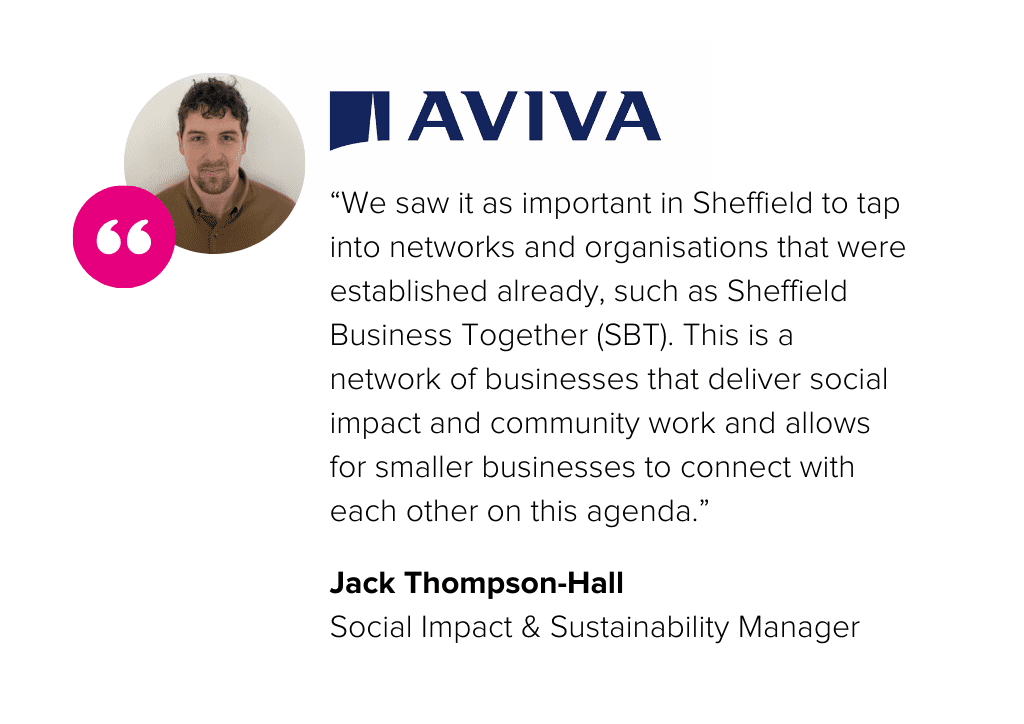
What are the best times and reasons to engage and involve local leaders?
You will need to continually find, engage, and work with local leaders throughout your Pride of Place partnership journey.
At these early stages, it can be useful to plan out how you engage with different stakeholders, in different ways, at different times in the Pride of Place process. Your plans will inevitably grow and change but outlining some key stakeholders you wish to consult across your first year or so will help set you up for success.
Year 1: Phase One – Scoping (3-6 months)
Year 1: Phase Two – In Development (4-8 months)
Early engagement with key stakeholders
How should I go about building relationships with local leaders?
The stakeholder engagement process includes using your stakeholder map to determine who to engage and how to engage them. Stakeholder engagement should be designed:
You will need to be pragmatic, starting with the engagement of priority stakeholders. Stakeholder engagement should progress from initial calls and meetings, going on to include interviews, surveys, and ‘community conversations’ with community representatives. You will be able to learn more about conducting more advanced stakeholder engagement in ‘Community Conversations and Business Roundtables.’ Building relationships with stakeholders is an ongoing process that needs to continue throughout the design and delivery of Pride of Place partnerships.
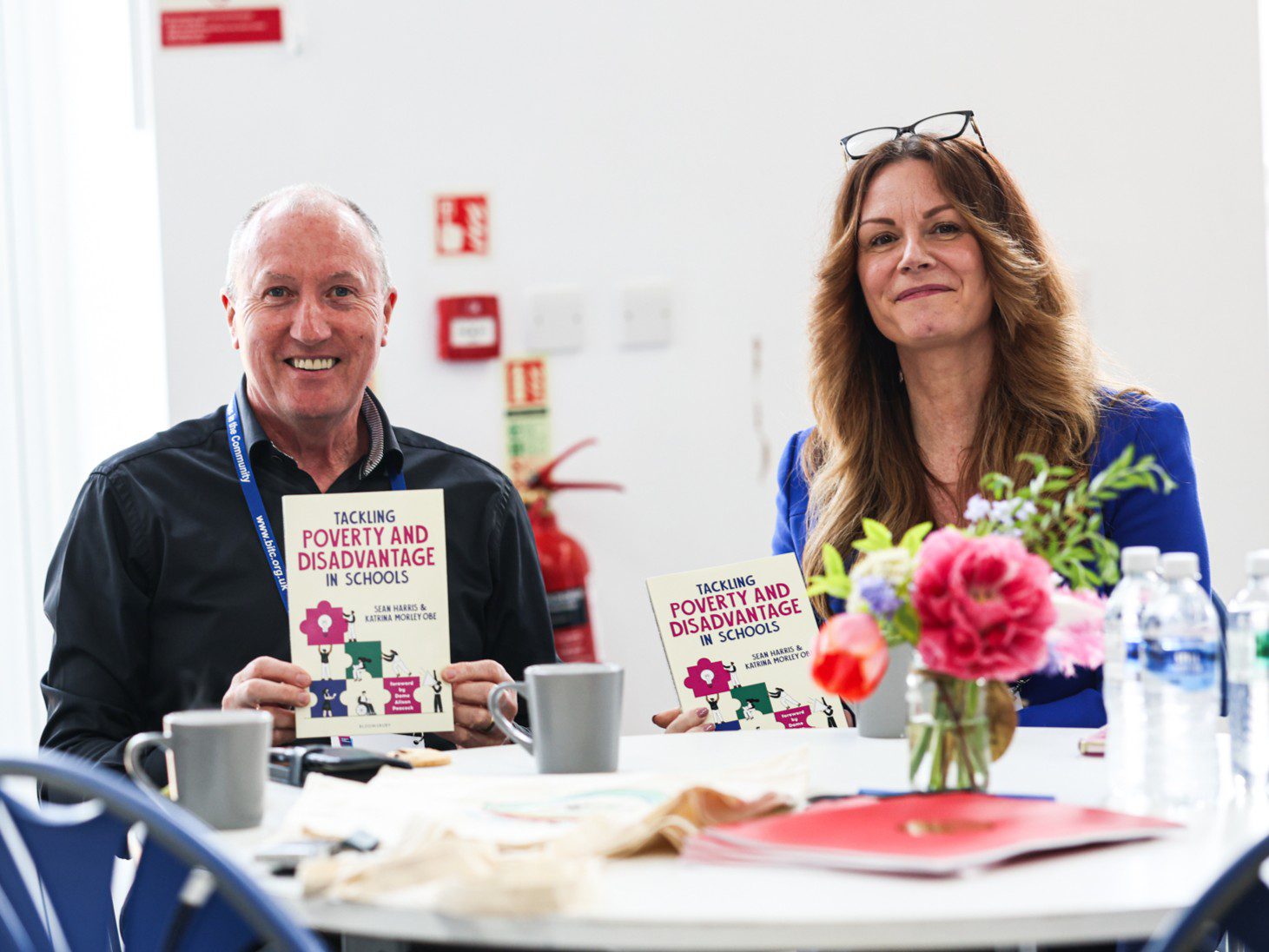
Resources
The resources below will support you in starting your placemaking journey and help provide an overview of best practice. More resources will be added to the modules as this Learning Hub is developed and improved, so keep in touch with your main BITC contact to learn more about the latest content as it launches:
Finding and Energising Local Leaders: FAQs
Next steps
If you feel like you need to do a bit more research and groundwork before reaching out to local leaders, you might find it useful to navigate to the other modules in this section, or go back to ‘Before You Start’ and ‘Getting to Know Your Potential Place’ for a reminder of the fundamentals.
If you have spoken with BITC and confirmed your plan of approach with local stakeholders in your place, you may feel ready to start building and managing your Pride of Place Board. If so, ‘Building and Managing Your Board‘ would be a great next step.

Help us build the Pride of Place Learning Hub
Our modules will be continuously updated. Your experience and feedback can help these tools become richer. Contribute to the conversation of best practices in placemaking by sharing your perspective with our team today. We welcome your feedback, case studies, and reflections on placemaking to help us curate our modules.
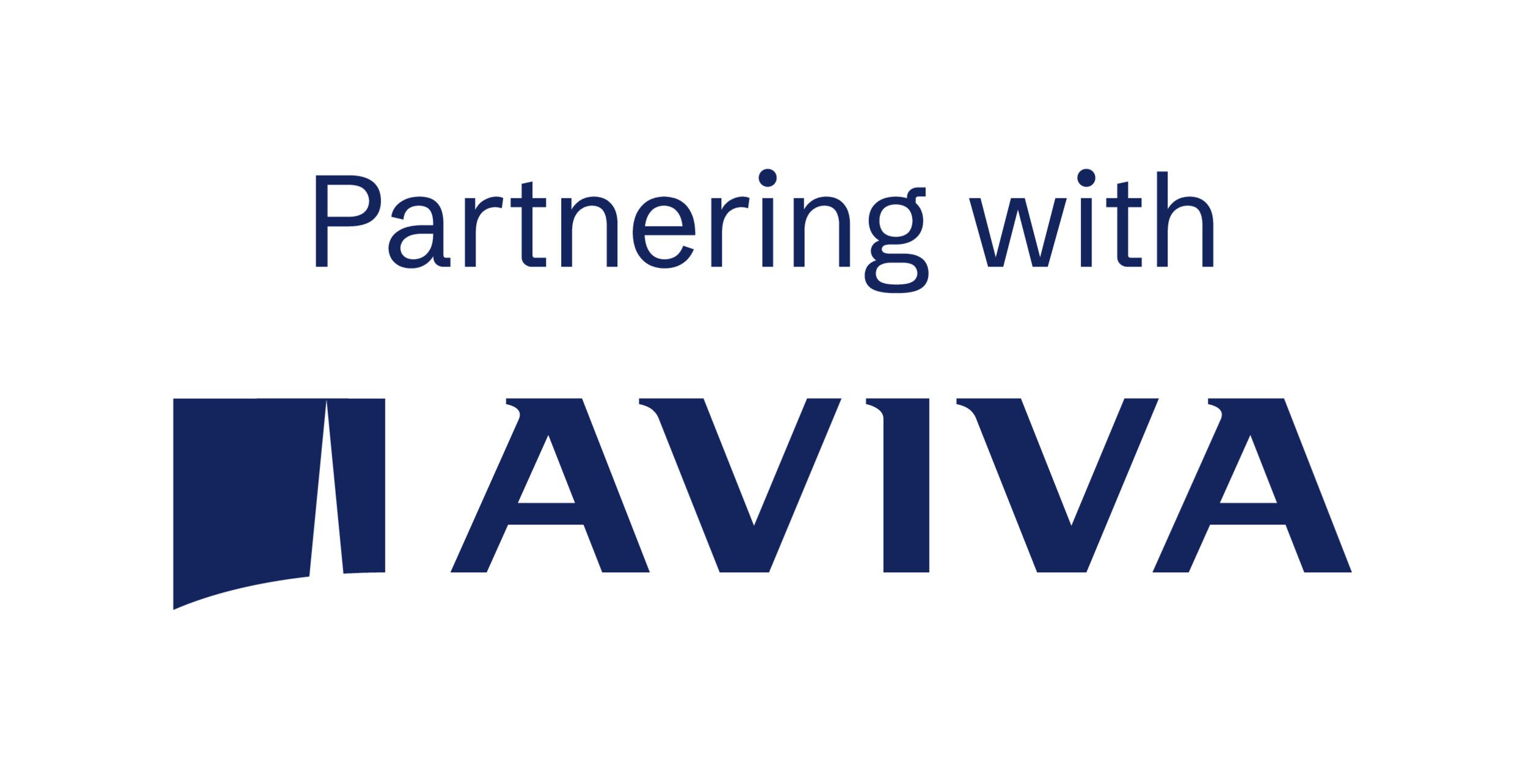
Our Pride of Place programme is made possible through partnering with Aviva
Aviva is the first Pride of Place Partner. Working together with BITC, the partnership will build thriving communities by breaking down barriers that impact access to education and employment, improving housing and local facilities, and tackling wider inequalities facing individuals throughout the UK. The work will bring together key local stakeholders in places such as community groups, businesses, and local councils to create a strategic vision for long-term change.




